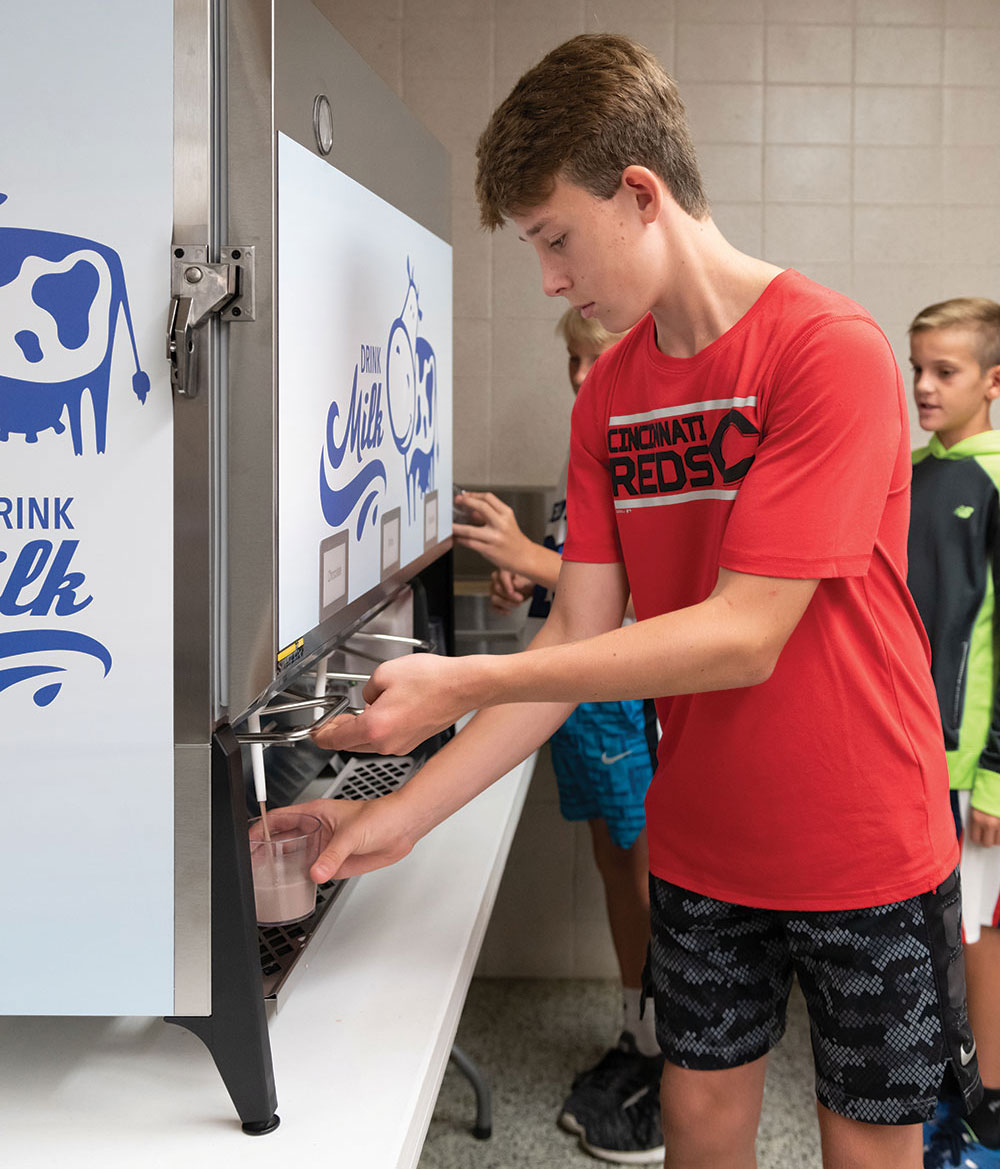We care a lot about your experience on our website. Please tell us how we can improve.
If you want an immediate response, chat with us now
Millions of milk cartons are handed out at lunch across the country every school day, which creates a LOT of waste. In fact, milk cartons make up at least 50% of a school's lunch trash volume. Furthermore, students waste 30% of all milk in cartons - equating to approximately 4 gallons of milk waste each day. For this reason, many schools are ditching milk cartons for a milk dispenser and reusable cups.
Given that one of the biggest categories of waste for schools is milk and milk cartons, finding an innovative way to deliver milk besides the traditional gable-top carton is critical. Milk dispensers are the perfect way to take on this problem.

91% reduction of milk packaging waste by compacted volume

89% reduction of milk packaging waste by weight
In addition to reducing packaging waste, milk dispensers are getting students to consume more milk. The increased consumption can be attributed to a combination of factors ranging from pure novelty to a higher perceived quality of the milk. Students have always vocalized a dislike for the taste of milk in cartons, which is why it's no surprise that they prefer the taste and chilled temperature of the milk from the dispensers.
Students enjoy serving themselves and especially love the ability to mix the chocolate and regular milks together - which is also a win for nutrition staff because it brings down the sugar content of the pure chocolate milk. That's something you can't do with cartons.

41% increase in daily milk taken

52% increase in daily milk consumed
Milk stays cold and at constant temperature (cartons in an open cooler lose one day of life expectancy for each hour it remains open)
Reduced cost for milk (3 to 5 gallon bags cost less than milk in individual cartons)
Lower disposal costs
Reduced staff efforts for waste removal
In-use studies have shown reduced energy costs

Minimally, two spigots are recommended to offer multiple milk options - white and chocolate. You may also want to consider a lactose-free option. Additional spigots may be needed based on the numbers of students served per line. A three-spigot dispenser is suggested for elementary schools with 400 or more students.
It's best to locate the dispenser before the cashier to ensure the meal can be identified as a 'reimbursable meal'. Place the dispenser on a table, counter or cart - be sure it's low enough for students to reach and for staff to restock. If you choose to use a cart, it should be an industrial cart with lockable casters to prevent movement when in use.
Reusable cups are the preferred serving method with milk dispensing service. However, it's still a cost effective option when done with disposable cups - although the environmental impact savings are lost. 9 Oz. squat cups are recommended to ensure students serve themselves 8 oz. and still have room to prevent spills.
Remarkably, schools that have implemented beverage dispensers reported minimal spills - even with younger grades. In fact, some schools reported less spills.
Generally, students already have a reimbursable meal by the time they get through the serving line. One thing you need to consider is whether your district has chosen the "offer versus serve" option for how they qualify for reimbursements. Audits from districts currently using dispensers have indicated no issues.
We recommend placing a bucket next to the trash or dish room window for leftover milk. This also helps to quantify waste and determine any reduction.
It's important to educate students and staff on making the switch to milk dispensing prior to implementation. With proper training, students have shown they can successfully pour their own milk. Phasing in by grade levels has proven to be helpful in elementary schools.
Students:
Staff:
• Bring each class to the cafeteria during non-service times and demonstrate how to use the dispenser
• Proper way to stock the milk dispenser
• Possibly include a short video to broadcast on the school's television network
• Proper cleaning/sanitizing of the milk dispenser
• Make it clear where to return cups (possibly directly into dishwasher racks to save time for foodservice/custodial staff)
• Proper way to store and rotate milk bags regarding expiration dates
Interested in joining our efforts to eliminate waste in your cafeteria? Speak to one of our education experts today to learn more!
Milk Dispenser Grant Opportunities:
Washington State:
Oregon:
Minnesota:
USDA:
Fuel Up To Play 60: